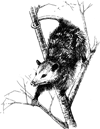Vertebrate Pest Conference: Proceedings

Vertebrate Pest Conference Proceedings: 16th (1994)
Date of this Version
February 1994
Document Type
Article
Abstract
Warfarin resistance was first discovered among Norway rat (Rattus norvegicus) populations in Scotland in 1958 and further reports of resistance, both in this species and in others, soon followed from other parts of Europe and the United States. Researchers quickly defined the practical impact of these resistance phenomena and developed robust methods by which to monitor their spread. These tasks were relatively simple because of the high degree of immunity to warfarin conferred by the resistance genes. Later, the second generation anticoagulants were introduced to control rodents resistant to the warfarin-like compounds, but resistance to difenacoum, bromadiolone and brodifacoum is now reported in certain localities in Europe and elsewhere. However, the adoption of test methods designed initially for use with the first generation compounds to identify resistance to compounds of the second generation has led to some practical difficulties in conducting tests and in establishing meaningful resistance baselines. In particular, the results of certain test methodologies are difficult to interpret in terms of the likely impact on practical control treatments of the resistance phenomena they seek to identify. This paper defines rodenticide resistance in the context of both first and second generation anticoagulants. It examines the advantages and disadvantages of existing laboratory and field methods used in the detection of rodent populations resistant to anticoagulants and proposes some improvements in the application of these techniques and in the interpretation of their results.

